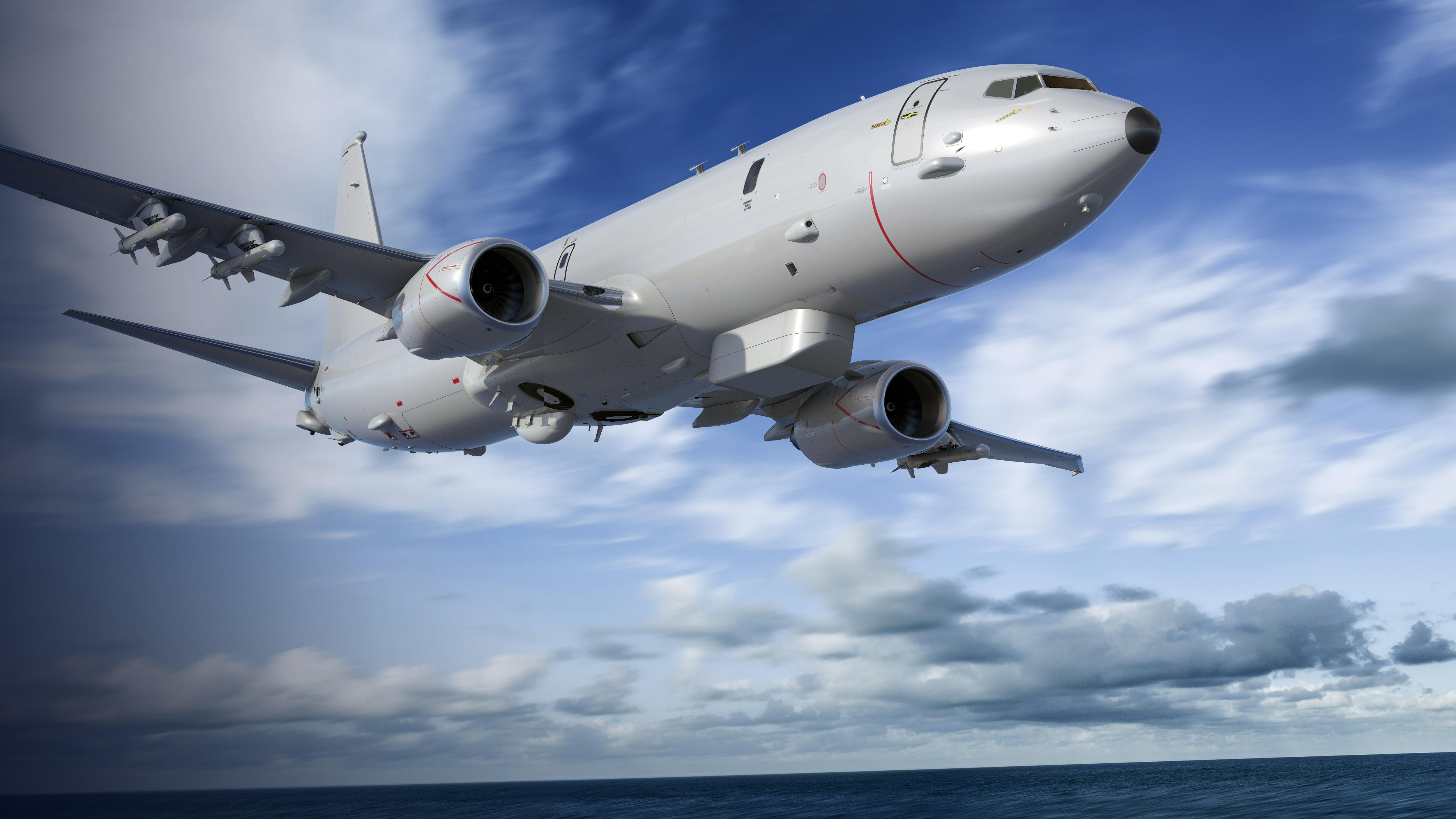
DUBAI—Boeing is using Dubai Airshow 2021 to showcase an internally funded multi-role belly pod for the P-8A maritime patrol aircraft.
The pod is designed to house a wide range of sensors and mission systems, including potential multiple configurations of equipment provided by operator nations.
Housed under the forward fuselage on the center weapon station, the pod already has attracted interest from P-8A operators like Australia and the UK, says Stu Voboril, P-8A vice president and program manager. “With the ability to put new sensors in it, potentially developed using in-country capabilities and sensors, this allows them to do different missions than just the standard P-8A.”
“We’ve got a lot of traction for that from the international community lately and they are very interested in it,” says Voboril, who adds that Boeing is willing to negotiate whether the pod is sourced from within the company or from the operator country based on the Boeing design. “We’re very open to any of those options and we think that could open up a larger market space.”
With the imminent delivery of the first P-8A to Norway and a recent order win from Germany, Boeing now has eight international customers for the 737 derivative outside of the primary operator, the U.S. Navy. “The international demand for the P-8A continues to grow, even the U.S. Navy is still getting nine more aircraft with Lot 12 for their reserve squadrons,” Voboril says, adding that the service is hoping for further funding to meet its stated requirement for 138 aircraft. A further two P-8As have been proposed in the fiscal 2022 U.S. defense budget request which is still under negotiation.
The first P-8As for New Zealand and South Korea also are due for delivery in 2022 and 2023, while further aircraft are in production for existing operators such as India, which is working with the U.S. Navy on a repeat buy for up to six aircraft. “The timing for this is coming up on us really closely here over the next couple of months,” Voboril says. Additional potential international operators include Canada as well as Saudi Arabia—rumored to have been in talks over ordering the model since 2017.
Boeing also expects additional market traction from the growing sophistication of maritime threats and increasing obsolescence of older patrol aircraft such as the Lockheed P-3.
“We continue to see more submarine capability from various nations being fielded at a pace we haven’t seen since the Cold War, and with the P-3 retiring over the years the P-8A is a logical contender,” Voboril says. The company puts the potential P-3 replacement market at around 75-plus aircraft.
Developed with the same digital design tools used for Boeing’s T-7 advanced trainer, the pod will attach to existing attachment, power and cooling access points already provided for payloads such as the APS-149 Littoral Surveillance Radar System and the follow-on Advanced Airborne Sensor radar. “Customers might want to do signal or communications intelligence or different kinds of intelligence, surveillance and reconnaissance missions, and have their own functions or their own mechanisms to do that using their own capability within country,” says Perry Yaw, Boeing’s leader of P-8 global sales and marketing.
Although fully designed, the pod still needs to go through airworthiness certification. The timing of that will be customer dependent, Boeing says. “If it is multiple nations then we’ll have a coalition or a partnership, and work through all the airworthiness testing to get the pod certified,” the company adds. The company says wind-tunnel tests also indicate a negligible drag penalty for the installation.
